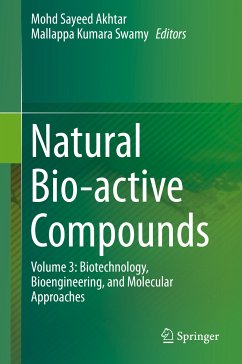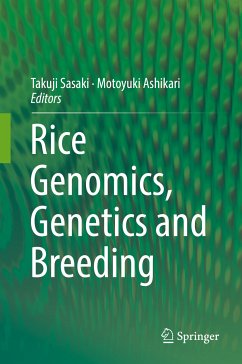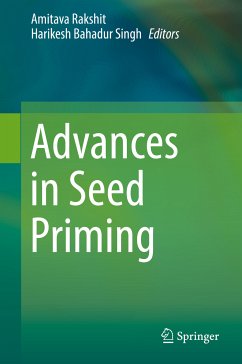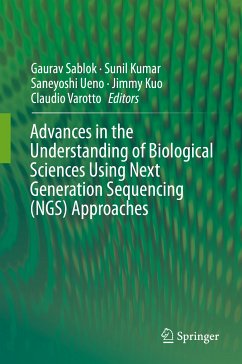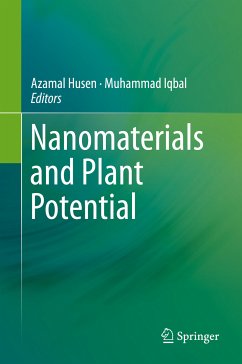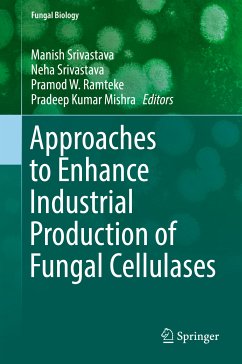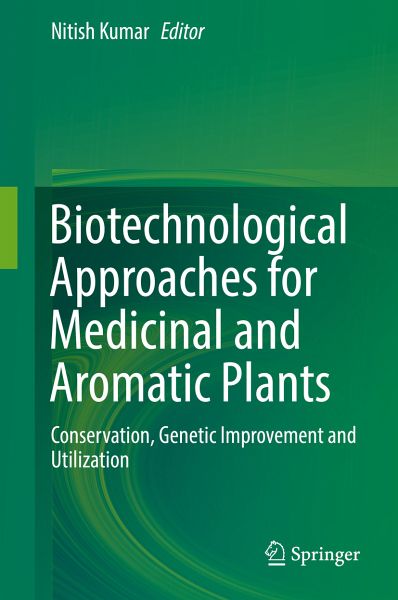
Biotechnological Approaches for Medicinal and Aromatic Plants (eBook, PDF)
Conservation, Genetic Improvement and Utilization
Redaktion: Kumar, Nitish
Versandkostenfrei!
Sofort per Download lieferbar
128,95 €
inkl. MwSt.
Weitere Ausgaben:

PAYBACK Punkte
64 °P sammeln!
For the majority of the world's population, medicinal and aromatic plants are the most important source of life-saving drugs. Biotechnological tools represent important resources for selecting, multiplying and conserving the critical genotypes of medicinal plants.In this regard, in-vitro regeneration holds tremendous potential for the production of high-quality plant-based medicines, while cryopreservation - a long-term conservation method using liquid nitrogen - provides an opportunity to conserve endangered medicinal and aromatic plants. In-vitro production of secondary metabolites in plant ...
For the majority of the world's population, medicinal and aromatic plants are the most important source of life-saving drugs. Biotechnological tools represent important resources for selecting, multiplying and conserving the critical genotypes of medicinal plants.
In this regard, in-vitro regeneration holds tremendous potential for the production of high-quality plant-based medicines, while cryopreservation - a long-term conservation method using liquid nitrogen - provides an opportunity to conserve endangered medicinal and aromatic plants. In-vitro production of secondary metabolites in plant cell suspension cultures has been reported for various medicinal plants, and bioreactors represent a key step toward the commercial production of secondary metabolites by means of plant biotechnology.
Addressing these key aspects, the book contains 29 chapters, divided into three sections.
Section 1: In-vitro production of secondary metabolites
Section 2: In-vitro propagation, genetic transformation and germplasm conservation
Section 3: Conventional and molecular approaches
In this regard, in-vitro regeneration holds tremendous potential for the production of high-quality plant-based medicines, while cryopreservation - a long-term conservation method using liquid nitrogen - provides an opportunity to conserve endangered medicinal and aromatic plants. In-vitro production of secondary metabolites in plant cell suspension cultures has been reported for various medicinal plants, and bioreactors represent a key step toward the commercial production of secondary metabolites by means of plant biotechnology.
Addressing these key aspects, the book contains 29 chapters, divided into three sections.
Section 1: In-vitro production of secondary metabolites
Section 2: In-vitro propagation, genetic transformation and germplasm conservation
Section 3: Conventional and molecular approaches
Dieser Download kann aus rechtlichen Gründen nur mit Rechnungsadresse in A, B, BG, CY, CZ, D, DK, EW, E, FIN, F, GR, HR, H, IRL, I, LT, L, LR, M, NL, PL, P, R, S, SLO, SK ausgeliefert werden.





